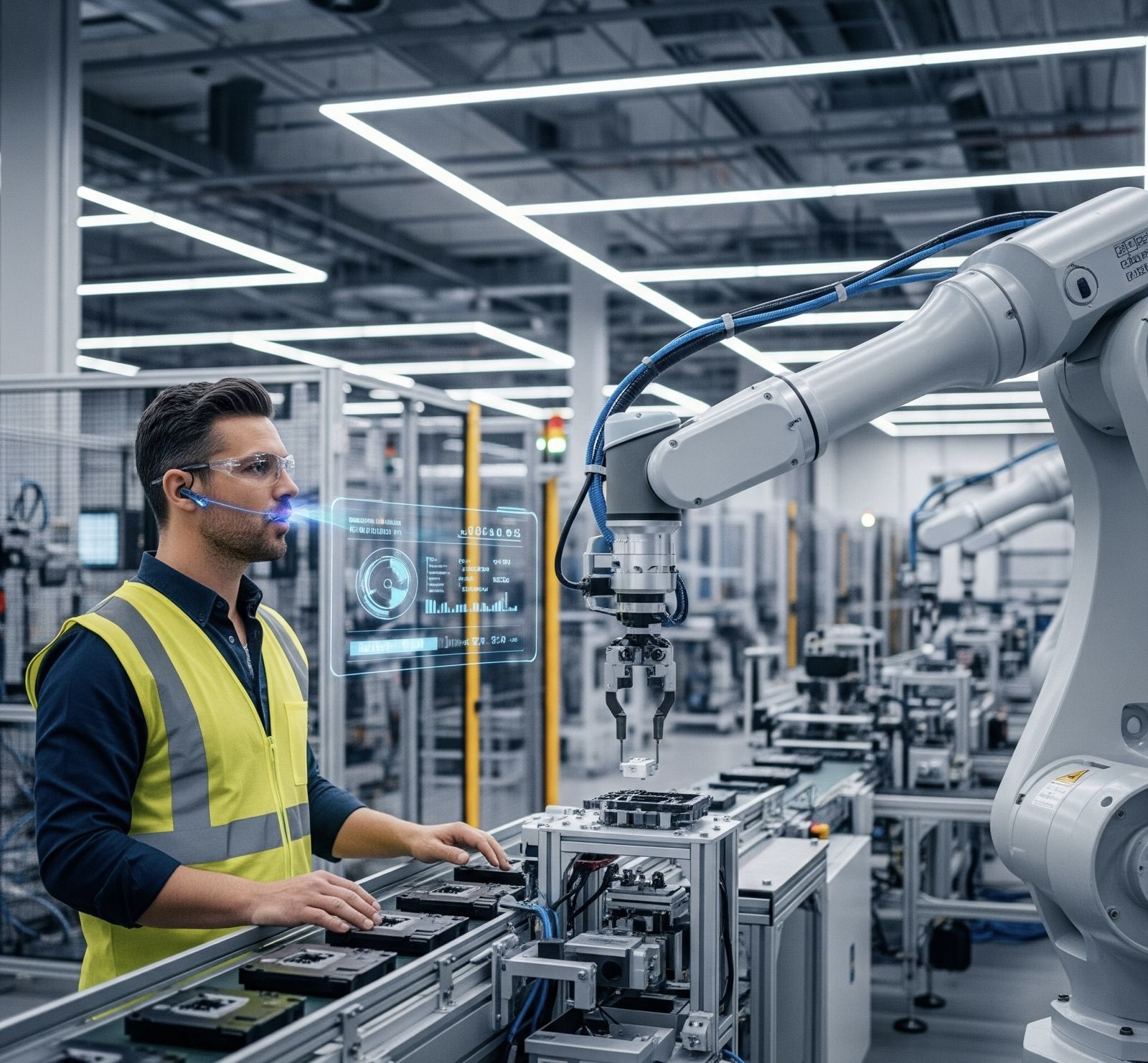
Voice-Controlled Manufacturing Environments
The Future of Hands-Free Operations
By: Destiny Dickerson
In the fast-paced world of manufacturing, efficiency and safety are paramount. As factories become increasingly automated and connected, one technology that is gaining momentum is voice control. Voice-controlled manufacturing environments enable operators, engineers, and maintenance teams to interact with machines and systems using spoken commands. This hands-free approach not only improves productivity but also enhances safety and allows for quicker decision-making on the factory floor.
The introduction of voice control into manufacturing is transforming traditional workflows. Instead of relying solely on physical interfaces such as touchscreens, buttons, or keyboards, workers can issue commands verbally while keeping their hands free for complex tasks. For example, an assembly line operator can request that a machine adjust its settings or request real-time data without interrupting their work. This capability is particularly valuable in environments where gloves, protective gear, or contaminants make physical interaction with controls difficult or unsafe.
One illustrative example is BMW’s use of voice-activated systems in its production plants. At BMW, workers can control various aspects of the assembly line or machinery through voice commands, thereby improving efficiency and reducing the need to access a physical control panel. This innovation helps keep the production process smooth and reduces downtime caused by manual adjustments.
Voice-controlled environments also offer significant advantages for maintenance and troubleshooting. Technicians can consult manuals, log issues, or control diagnostic equipment verbally while working on machinery. This seamless interaction allows for faster repairs and minimizes delays. For instance, General Electric (GE) has experimented with voice assistants that help maintenance staff access technical data or update system statuses without leaving their workstations.
Beyond efficiency and convenience, voice control contributes to enhanced safety. In hazardous manufacturing settings, such as chemical plants or operations involving heavy machinery, minimizing physical contact with control panels reduces exposure to potential risks. Workers can maintain situational awareness and communicate with machines without diverting their attention or stopping their tasks.
While voice-controlled manufacturing environments hold great promise, they also present challenges to overcome. Factories can be noisy, and voice recognition systems must be robust enough to understand commands accurately amid ambient sounds. Companies like Microsoft and Google are investing heavily in noise-cancellation technologies and specialized voice recognition models tailored for industrial settings to address these hurdles.
Looking ahead, the integration of voice control with other emerging technologies, such as augmented reality (AR) and artificial intelligence (AI), could further revolutionize the manufacturing industry. Imagine workers wearing AR glasses that display contextual information while they verbally command machines or access support, creating a truly immersive and efficient work environment.
In conclusion, voice-controlled manufacturing environments are ushering in a new era of hands-free operations that enhance productivity, safety, and flexibility. By enabling workers to communicate naturally with machines, manufacturers can reduce downtime, streamline processes, and create safer work environments. As the technology continues to mature, its adoption across diverse manufacturing sectors is likely to accelerate, fundamentally reshaping how factories operate.
Sources:
- “BMW Embraces Voice-Control Technology on Factory Floor,” IndustryWeek, 2023. https://www.industryweek.com/technology-and-iiot/article/21234567/bmw-embraces-voice-control-technology-on-factory-floor
- “Voice Assistants in Manufacturing Maintenance,” GE Reports, 2022. https://www.ge.com/reports/voice-assistants-transform-manufacturing-maintenance/
- “Advances in Industrial Voice Recognition,” Microsoft Azure Blog, 2024. https://azure.microsoft.com/en-us/blog/industrial-voice-recognition-advances/
- “The Future of Voice Technology in Manufacturing,” Manufacturing Tomorrow, 2023. https://www.manufacturingtomorrow.com/article/2023/01/the-future-of-voice-technology-in-manufacturing/17844